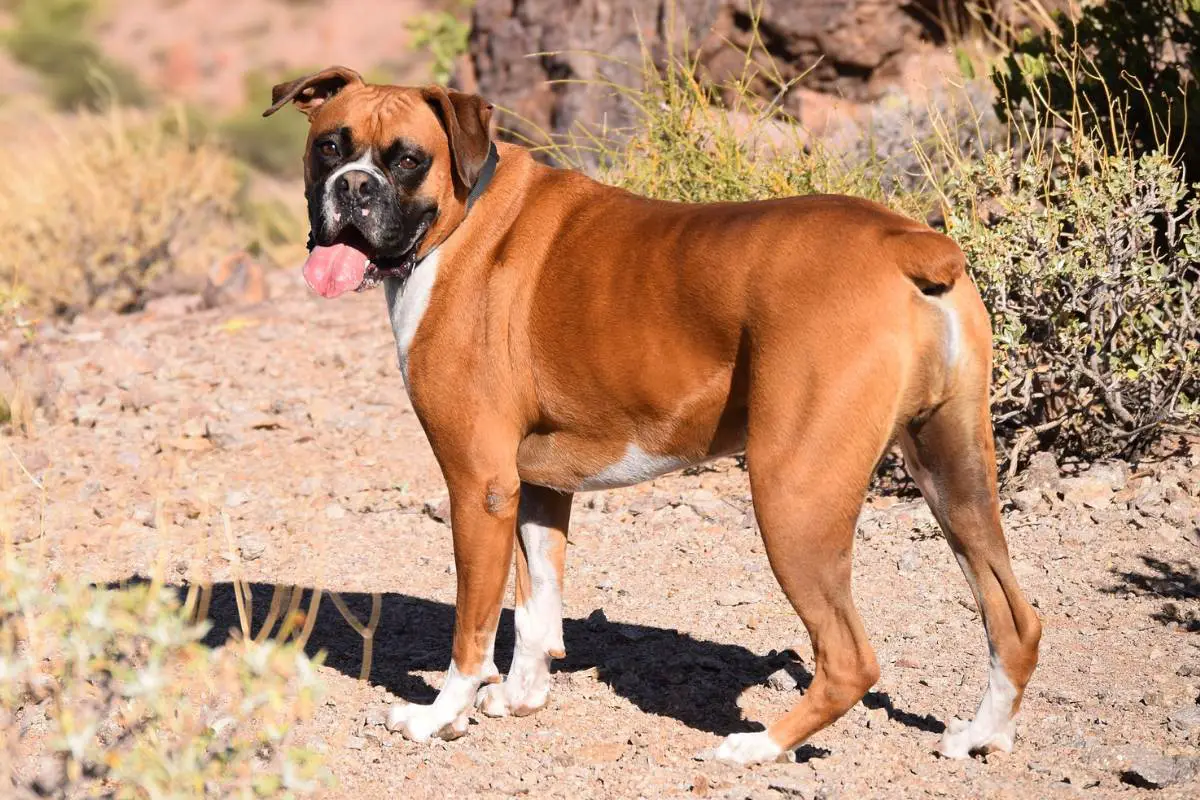Every dog breed has its own unique set of characteristics and boxer dogs are no exception. From their playful personalities to their athletic build, there is much to love about this breed. In this article, we will explore the different characteristics that make Boxer Dogs so special. In this article we look at 18 characteristics of the boxer breed of dogs.
18 Characteristics of Boxers
Whether you are considering getting one or just want to learn more about them, read on to find out everything you need to know about Boxer Dogs.
Appearance
1. Body shape
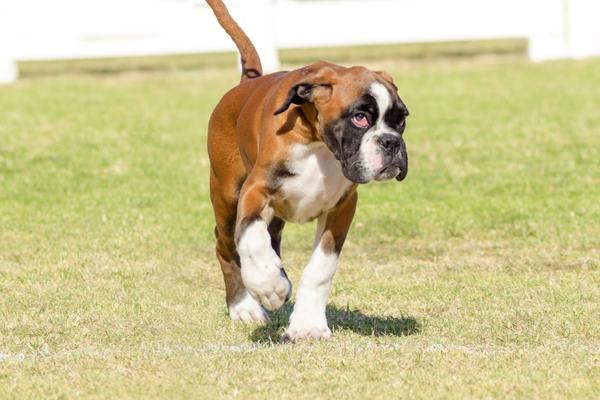
Boxer dogs are unique in their body shape; they are well-muscled and powerful, with a broad chest and thick neck. They have short fur, which can come in various colors, including fawn, brindle, and white.
The hind legs of Boxers are slightly longer than the front, giving them a jaunty gait as they walk. Overall, these lively pups have an athletic build that supports their lively energy and love for playtime.
2. Head and Face

The Boxer Dog is most easily recognized by its distinctively square head with a short muzzle, broad forehead, and black mask. Completing the look are their gorgeous brown eyes and striking black noses.
The face of a Boxer is also quite unique; they have wrinkled brows that give them a serious expression, yet their gaze can be rather gentle when they look at those they love. Their ears are medium-length and floppy, which adds to the overall charm of this breed.
3. Height and Weight
Boxer dogs are a medium-sized breed with a strong and muscular body. Males generally stand at about 21 to 25 inches in height, with females being slightly smaller at between 20 and 23 inches tall. As for weight, the males range from 65 to 80 pounds, while females weigh between 50 and 65 pounds.
4. Coat
The coat is typically fine and smooth yet very shiny and tight to the body. Most boxer coats are fawn or brindle, but some can have white-colored markings on the chest, forehead, neck, and legs.
Fawn can range from light tan or yellow, reddish tan, mahogany, stag/deer red, and dark honey-blonde shades. They do not require a lot of grooming, but regular brushing and bathing will help keep their coats healthy and looking their best.
5. Mouth and Bite
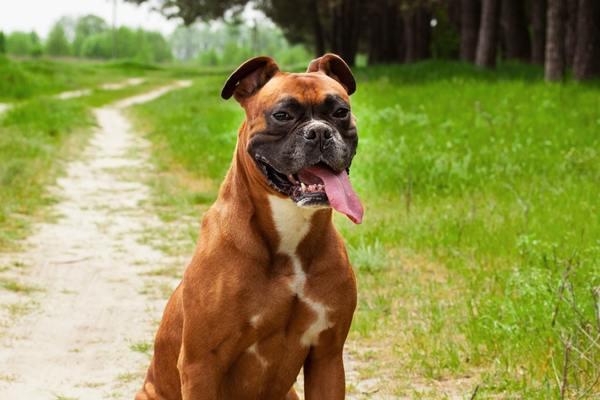
One of the defining characteristics of the Boxer Dog is its big flews, which give it a distinct look. However, this facial feature also tends to hide the fact that these pups have an undershot bite, meaning that when their mouths are closed, the bottom jaw extends beyond the top.
While this may seem unsightly at first glance, it is an important part of this breed’s anatomy as it helps them grip and hold onto items more effectively.
6. Tail
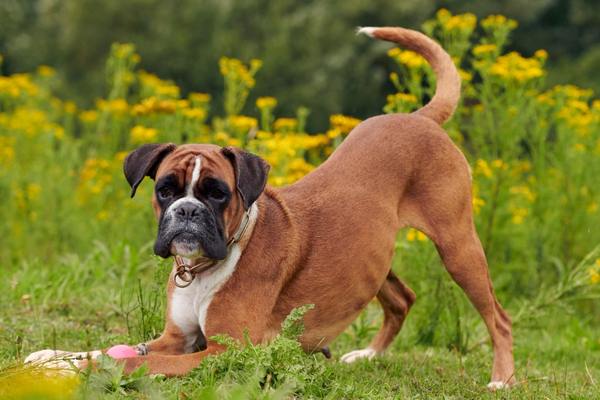
Left uncropped, the tail of the Boxer Dog is usually high-set and tapers to a point at the end. It is usually carried in an upward curve and can be a great indicator of the pup’s mood; when they are happy, their tails tend to wag more vigorously.
However, many breeders/owners choose to have the tails docked. This particular medical procedure involves removing a portion of the tail, leaving approximately three-quarters to one inch in length. To ensure safety and efficacy, this surgery should be performed on puppies no older than six days old and by a qualified veterinary surgeon.
7. Paws and Claws
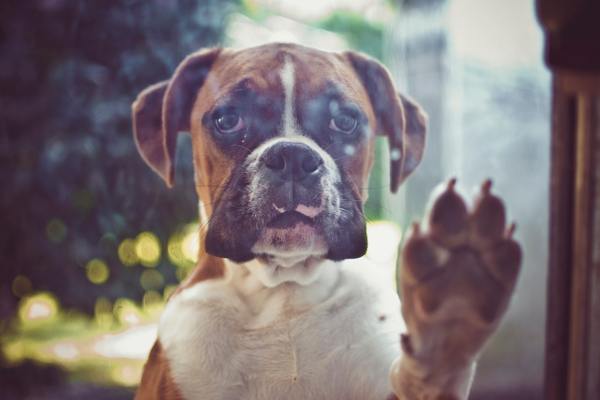
Boxer Dogs have strong, sturdy paws that support their athletic build. They tend to stand with their feet apart and slightly outwardly facing, giving them a wider base for stability and balance. As for their claws, Boxers are equipped with short and curved claws that allow them to grip surfaces easily – these can be trimmed regularly as needed.
Behavior
8. Temperament

Boxers are a loving and loyal breed that bond deeply with their families. They can be incredibly affectionate, gentle, and playful, which makes them great companions for both adults and children. However, they can also be quite fearless when it comes to protecting their loved ones and can be defensive if they feel threatened.
9. Barking
As far as breed predisposition goes, Boxers aren’t known as barking machines. However, they can be quite vocal when it comes to alerting their owners of potential danger or strangers entering the home. They usually bark in short bursts and are quick to calm down once they realize there is no threat.
10. Trainability
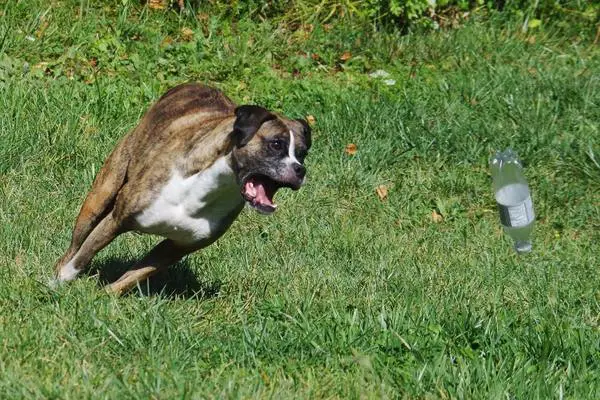
Boxers can be quite willful and stubborn, so it’s important to start training them at a young age. They respond well to positive reinforcement and reward-based training techniques, so use plenty of treats and praise to keep them motivated.
It’s also important to establish yourself as the alpha and be consistent with commands. Remember that they can also become bored of routines quickly, so vary their training sessions regularly to keep them engaged.
11. Energy Levels
A breed’s energy level is the best indication of how naturally active it is. Boxers are a high-energy breed, so they need plenty of physical and mental stimulation to stay content. They need at least one hour of vigorous exercise each day, including walks, jogs, hikes, or playtime in the yard.
Additionally, they should have access to a secure outdoor area for running around and exploring. Boxers also enjoy canine sports such as agility and flyball to keep their minds stimulated.
Health
12. Shedding
These dogs are considered minimal to moderate shedders. This means they lose some hair throughout the year, but it is not excessive.
However, you may find that they shed more during the spring due to seasonal changes. During this time, it’s a good idea to brush them more regularly, as it will help to loosen and remove any excess hair.
13. Common Health Issues
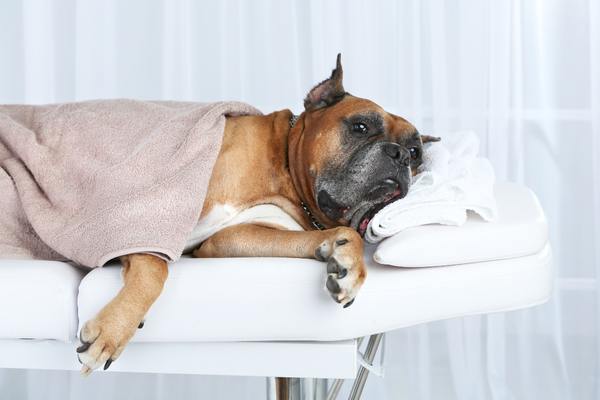
Like all breeds, Boxers are susceptible to certain health conditions. The most common issues include:
- Hip Dysplasia – a condition where the hip joint is deformed, which can cause pain and lameness in the hind legs.
- Heart Disease – Boxers are predisposed to developing heart conditions such as arrhythmia and cardiomyopathy.
- Chronic kidney disease (CKD) – a progressive kidney disease that can eventually lead to complete organ failure
- Degenerative Myelopathy (DM) – this is a progressive disease of the spinal cord that can cause weakness in the hind legs.
- Various Cancers – Boxers are prone to various kinds of cancers, including those of the thyroid, brain, blood, mammary glands, spleen, testes, lymph system (lymphoma), and other organs. Unfortunately, some of these cancers can be malignant and require specialized treatments.
14. Lifespan
On average, Boxers live for about 9-15 years. This can vary depending on various factors, including diet and exercise, genetics, and overall health. Provide your Boxer with regular vet checkups to ensure they are healthy and happy throughout their lifetime.
Hearing and Vision
15. Hearing
Even though boxers have floppy ears, they have excellent hearing and can detect sounds from far away. Their sharp hearing allows them to easily distinguish between different noises and be alerted of potential danger. However, studies have shown that they are prone to age-related hearing loss, usually occurring around 10 years of age.
Research has also shown that the color of their coat may play a role in determining whether they will experience hearing problems or not, where brindles are more prone to deafness than fawns. But overall, white boxers are more likely to experience hearing issues or even be completely deaf.
16. Vision
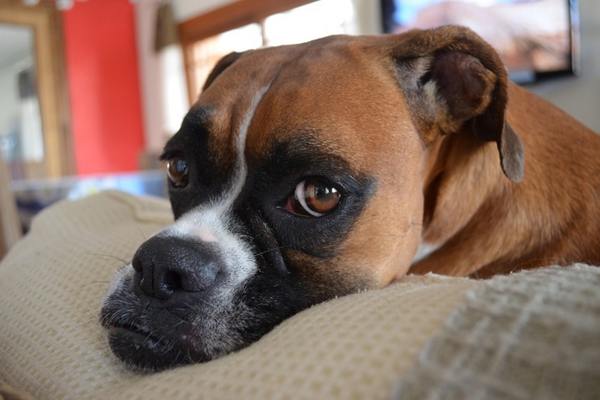
Boxers have very good eyesight, allowing them to detect movement from a distance. They are especially sensitive to motion in low light, and their eyes have the ability to adjust quickly to changes in light intensity. However, they may experience age-related vision deterioration over time.
17. Grooming Requirements
Despite its short coat, caring for a Boxer requires weekly brushing with either a curry brush or rubber mitt in order to reduce shedding around the house. This keeps their skin healthy by removing dirt and debris collected during exercise outdoors or during bath time sessions. Additionally, trimming nails once every couple of months is necessary to keep them from splitting or cracking, which can lead to painful injuries if left unchecked.
18. Litter Size
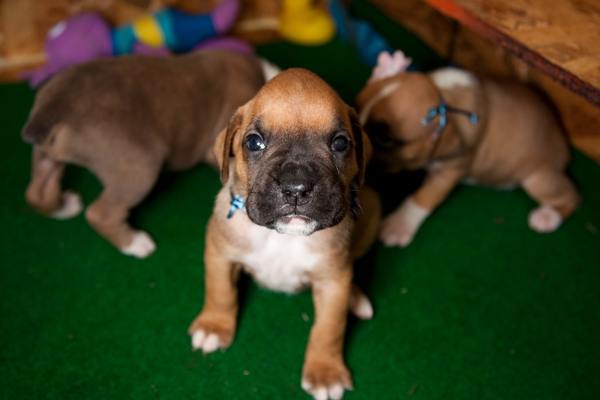
Use the above information to create a detailed paragraph about the litter size and related information. Boxer dogs are a popular breed, with an average litter size of 6-8 puppies. The age at which a female Boxer enters the proestrus stage is usually between 6 months and 1 year old, and she can have up to 2 litters per year.
The average gestation period usually takes 63 days, and upon delivery, the newborn puppies generally weigh between 2.5 to 3.2 lbs (1.2 to 1.4 kg). By the time they reach 6 months of age, they should be somewhere in the range of 41-48 lbs (18.6-21.8 kg). It’s important for owners to ensure their pups get plenty of exercise and food during this critical growth period if they want them to reach their full potential size when fully grown.

